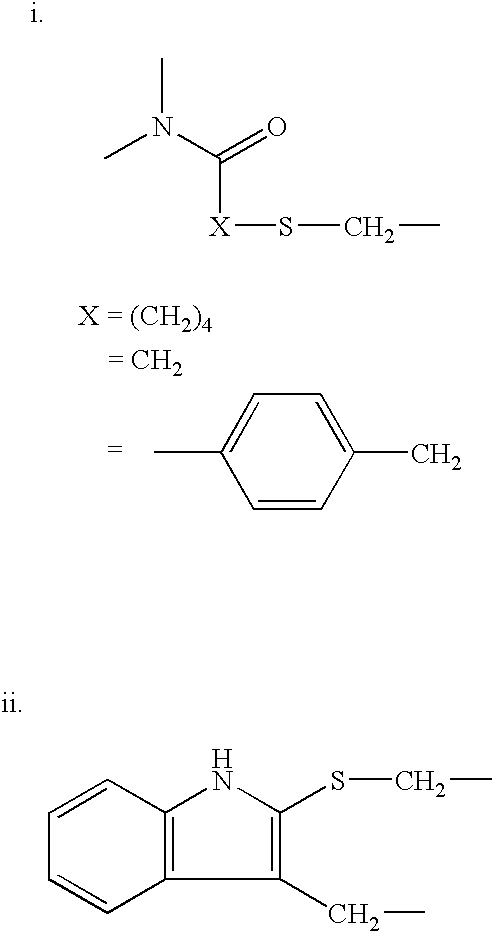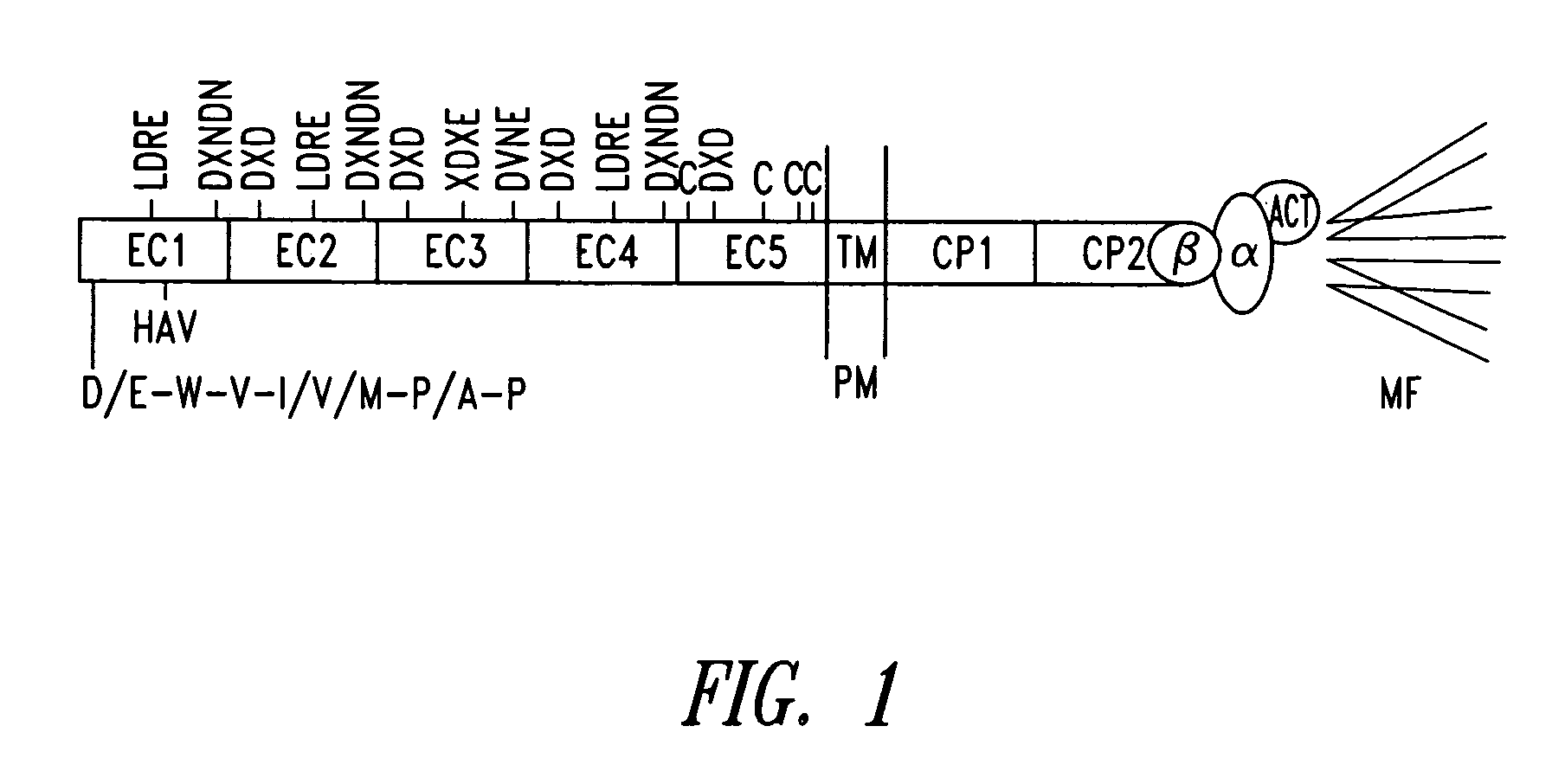Compounds and methods for modulating functions of classical cadherins
a cadherin and function technology, applied in the direction of animal/human proteins, cyclic peptide ingredients, antibody ingredients, etc., can solve the problems of limited use of skin patches, hydrophobic molecules, and undesirable cell adhesion levels, so as to facilitate wound healing, and enhance inhaled compound delivery
- Summary
- Abstract
- Description
- Claims
- Application Information
AI Technical Summary
Benefits of technology
Problems solved by technology
Method used
Image
Examples
example 1
Preparation of Representative Cyclic Peptides
[0292] This Example illustrates the solid phase synthesis of representative cyclic peptides as cell adhesion modulating agents.
[0293] The peptides are assembled on methylbenzhydrylamine resin (MBHA resin) for the C-terminal amide peptides. The traditional Merrifield resins are used for any C-terminal acid peptides. Bags of a polypropylene mesh material are filled with the resin and soaked in dichloromethane. The resin packets are washed three times with 5% diisopropylethylamine in dichloromethane and then washed with dichloromethane. The packets are then sorted and placed into a Nalgene bottle containing a solution of the amino acid of interest in dichloromethane. An equal amount of diisopropylcarbodiimide (DIC) in dichloromethane is added to activate the coupling reaction. The bottle is shaken for one hour to ensure completion of the reaction. The reaction mixture is discarded and the packets washed with DMF. The N-α-Boc is removed by ...
example 2
BiaCore
[0295] The binding of representative peptide modulating agents to Fc-E-cadherin chimeric protein in either the presence (3 mM CaCl2) or absence of calcium was assessed using a BIAcore X™ Biosensor (Pharmacia Ltd., Sweden). Protein A was immobilized on the flow cells of a CM 5 sensor chip using a standard amine coupling method. The surfaces were activated with a 7 min injection of NHS / EDC, followed by a 7 min injection of protein A in 10 mM acetate pH 5.0 at a concentration of 50 ug / mL and blocked with a 7 min injection of 8 M ethanolamine, pH 8.2. This immobilization procedure resulted in the immobilization of ˜8,000 RU of protein A on the CM5 chip surface. Next, Fc-E-cadherin was injected over the protein A surface to be captured on the sensor chip. These capturing steps resulted in surface densities of 3500 RU for Fc-E-cadherin.
[0296] To test compound binding to these surfaces, candidate modulating agents were injected in a three-fold dilution series over the Fc-E-cadheri...
example 3
Disruption of Human Ovarian Cancer Cell Adhesion
[0297] This Example illustrates an assay that can be used to detect the ability of candidate cell adhesion modulating agents to disrupt adhesion of human ovarian cancer cells.
[0298] The human ovarian cancer cell line SKOV3 (ATCC #HTB-77) expresses N-cadherin. SKOV3 cells are cultured in a modified MEM-based media containing 10% FCS. Cells are grown in T-250 culture flasks and maintained by periodic subculturing. Candidate modulating agents are tested on cells grown in individual wells of 96-well culture dishes (surface area of each well was 0.32 cm2). Cells are harvested from flasks and seeded at a density of 50,000 cells per well in 0.1 mL media containing a candidate modulating agent at concentrations of 1, 0.1, or 0.01 mg / mL, or in the absence of the candidate modulating agent. Media control wells are also established. Cultures are evaluated periodically by microscopic examination under both bright field and phase contrast conditi...
PUM
| Property | Measurement | Unit |
|---|---|---|
| pH | aaaaa | aaaaa |
| distances | aaaaa | aaaaa |
| dihedral angles | aaaaa | aaaaa |
Abstract
Description
Claims
Application Information
 Login to View More
Login to View More - R&D
- Intellectual Property
- Life Sciences
- Materials
- Tech Scout
- Unparalleled Data Quality
- Higher Quality Content
- 60% Fewer Hallucinations
Browse by: Latest US Patents, China's latest patents, Technical Efficacy Thesaurus, Application Domain, Technology Topic, Popular Technical Reports.
© 2025 PatSnap. All rights reserved.Legal|Privacy policy|Modern Slavery Act Transparency Statement|Sitemap|About US| Contact US: help@patsnap.com



